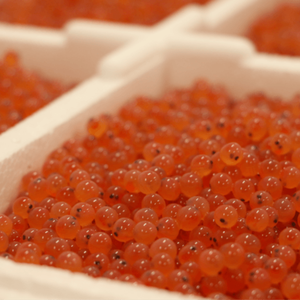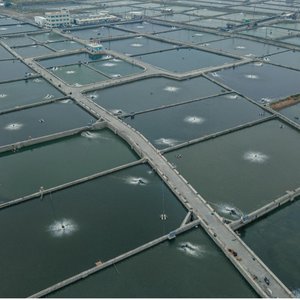In protandric species such as gilthead seabream, sex inversion from males to females may happen every year at the hatcheries. Therefore, it is common practice to remove larger, older individuals – usually females – and substitute them with younger fish – two-year-old males – every few years to avoid the broodstock ending up with a very high female percentage.
Researchers from the Institute of Marine Biology, Biotechnology, and Aquaculture of the Hellenic Center for Marine Research monitored sex ratio shifts and spawning performance in gilthead seabream over several consecutive reproductive seasons to get more insights into the correct broodstock management.
Experimental broodstock formation
The experiment started in 2009 when 117 seabreams, with an initial weight of around 50 grams, were delivered to two 2,000-liter tanks and grown for two years. During these two years, fish were sampled four times to monitor the gonads’ sex reversal process by histology.
In 2012, two broodstocks were formed and moved to two 5,000-liter tanks kept at 18-20°C using seawater from a borehole and with natural photoperiod for five consecutive spawning seasons. The constant water temperature was shown in an earlier study from the same research group, that it does not affect reproductive maturation. In 2015, after the sex ratio sampling, four large females were removed and four younger males were added to each of the two tanks.
Sex ratio and spawning performance
Fish were 100% males in January 2010. Although in September 2010, bisexual gonads were found, only males were found again in January 2011. At three years of age, in January 2012, the first females were found in the broodstocks.
Males decreased from 100% in 2011 to 35% in 2012, the first spawning season, and then to 15% in 2013 and remained stable until 2015. At this point, when the researchers added younger males and removed older females, the male percentage raised up to 52%. This change in the broodstock, which was aimed to readjust the male percentage to 50% in the fourth spawning season, cause a sex change of larger males to females. Afterward, the male percentage dropped again to 18% in the following spawning season.
Moreover, no difference was observed in monthly relative fecundity between years. Fertilization success was the highest during the second and third reproductive seasons and dropped significantly during the last year of the study.
Conclusions
Researchers suggest that there is no need to add males to gilthead seabream broodstock over the years, as the sex ratio is stabilized and egg production and fertilization success remain high even with a relatively low male:female sex ratio. The use of constant water temperature for seven consecutive years was again confirmed that not only it did not affect negatively reproductive maturation, but it resulted in an elongation of the spawning period.
“These findings can be very useful to the aquaculture industry as they suggest that a year-round egg production of seabream can be achieved by maintaining only two broodstocks with a six-month difference in annual photoperiods and constant water temperature (18-20°C), and without any modifications in the broodstock structure, with economic advantages to commercial hatcheries, due to savings in heating and/or cooling costs, and the maintenance of fewer stocks and smaller total breeding biomass,” researchers concluded.
Reference:
Maria Papadaki, Dimitris Karamanlidis, Eirini Sigelaki, Ioannis Fakriadis, Constantinos C. Mylonas. Evolution of sex ratio and egg production of gilthead seabream (Sparus aurata) over the course of five reproductive seasons. Aquaculture and Fisheries, 2022. https://doi.org/10.1016/j.aaf.2022.10.006.













